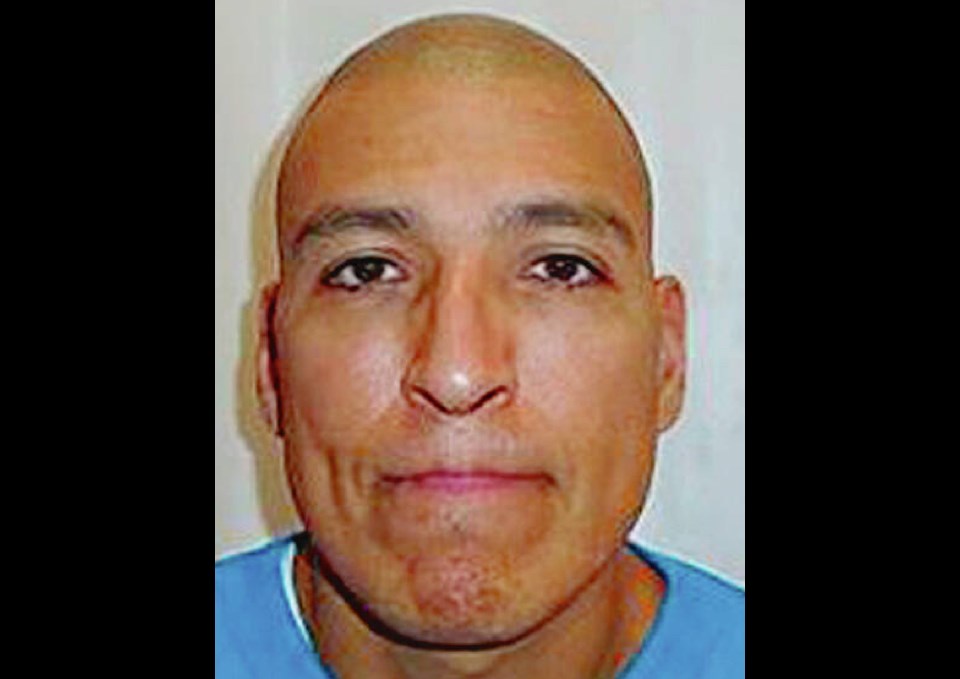Warning: This story contains graphic details of a violent assault.
Lawyers representing James Lee Busch have decided not to call any witnesses at his trial for the first-degree murder of Martin Payne in July 2019.
The Crown has now closed its case and members of the jury have been excused until Monday.
On Wednesday, Dr. Steven White, lead forensic pathologist for the B.C. Coroners Service, testified that Payne died from multiple sharp and blunt force injuries due to an assault.
White and prosecutor Chandra Fisher guided the jury through autopsy photographs documenting the fatal injuries inflicted on Payne, 60, who was murdered in his home in Metchosin on July 8, 2018.
The photographs showed bruising on Payne’s forehead and defensive wounds on his forearms.
One photograph showed a fatal stab wound on the right side of Payne’s neck that severed the carotid artery and jugular veins on both sides of his neck and injured his trachea and C-6 of his cervical spine.
“This would have been a lethal injury because it cut off blood supply to the head and [Payne] was inhaling blood as well,” explained White, agreeing the injury could have been caused by a large knife.
Payne also sustained a long knife wound on the back of his neck, which did not hit the spine or any major blood vessels, but would have caused pain and blood loss.
White testified that he examined a third stab wound located on Payne’s left shoulder. The wound was two centimetres wide and 10 centimetres deep and would have to have been caused by a smaller knife with a width no larger than two centimetres, the pathologist said.
Payne also had a stab wound on the palm of his right hand.
Four chop wounds — made by a heavy object with a sharp edge — were found on the right side of Payne’s head above his right ear and on the top of his head, White testified. The wounds, which could have been fatal, fractured Payne’s skull and could not have been made by a knife.
Fisher showed White a photo of a hatchet that was found in the bathroom beside a large bowie knife, and he agreed it was consistent with the object that caused the chop wounds to the head.
“It has the characteristics of a weapon that would be required to inflict the chop wounds that we saw at autopsy,” said White.
Payne was alive when he suffered the chop wounds and the knife wound through the neck, White testified.
On Tuesday, a forensics specialist with the Vancouver Island Major Crime Unit testified that he considered getting the handwriting on a note found at the scene analyzed, but couldn’t locate a suitable expert in Canada.
Const. Donald Davidson said such experts seemed to be easier to find in the past.
Defence lawyer Ryan Drury, representing Busch, previously asked RCMP forensics specialist Cpl. Kim Sarson why handwriting analysis was not done on a note found in Payne’s home that read: “What is your pins for cards?”
Drury said since the analysis wasn’t done, Payne could not be ruled out as the person who wrote the note.
Sarson told Drury that she raised the subject of handwriting analysis with a detective but believes it was not done.
Admissions of fact read into the court record earlier include that when Busch was arrested, he was wearing Payne’s Canucks cap and carrying Payne’s backpack, while co-accused Zachary Armitage, who is no longer at the trial and now being dealt with in a “separate way,” was wearing Payne’s Mount Washington hoodie and Payne’s hiking boots.
Cpl. Stephanie Lin, another forensics specialist, told the court that of the 10 fingerprints she found at Payne’s home, one located on a glass matched Armitage and none matched Busch.
— With files from Jeff Bell



